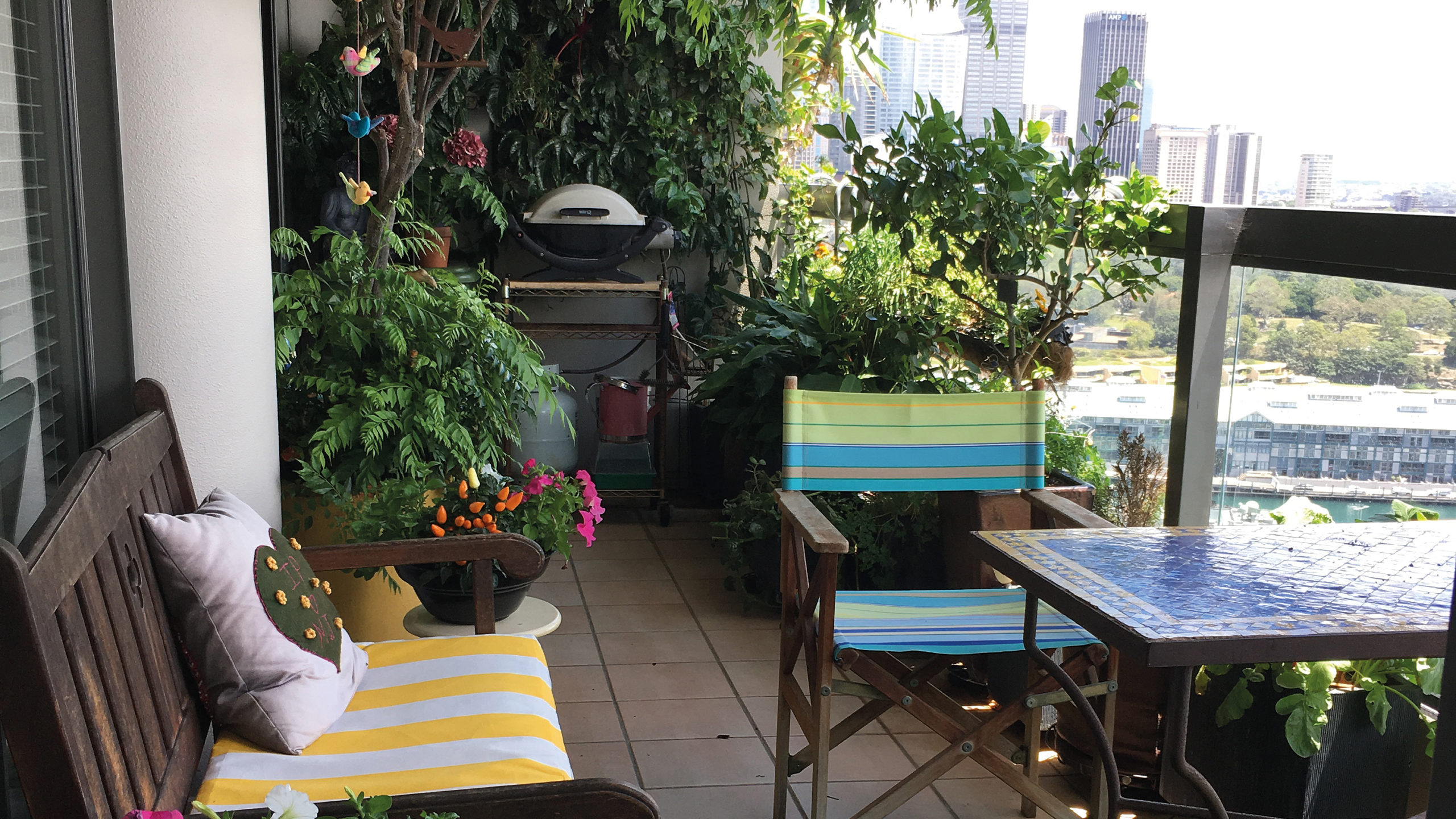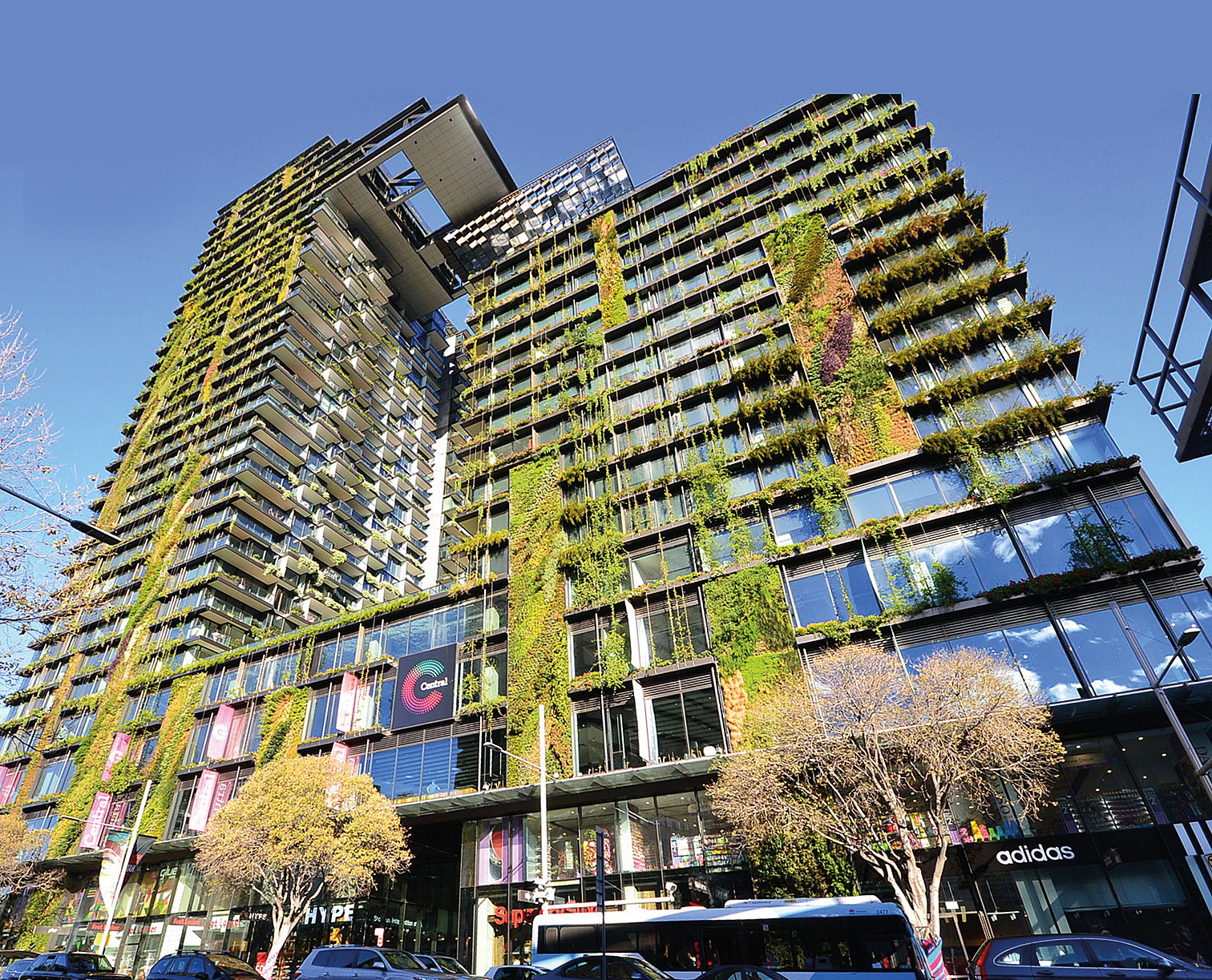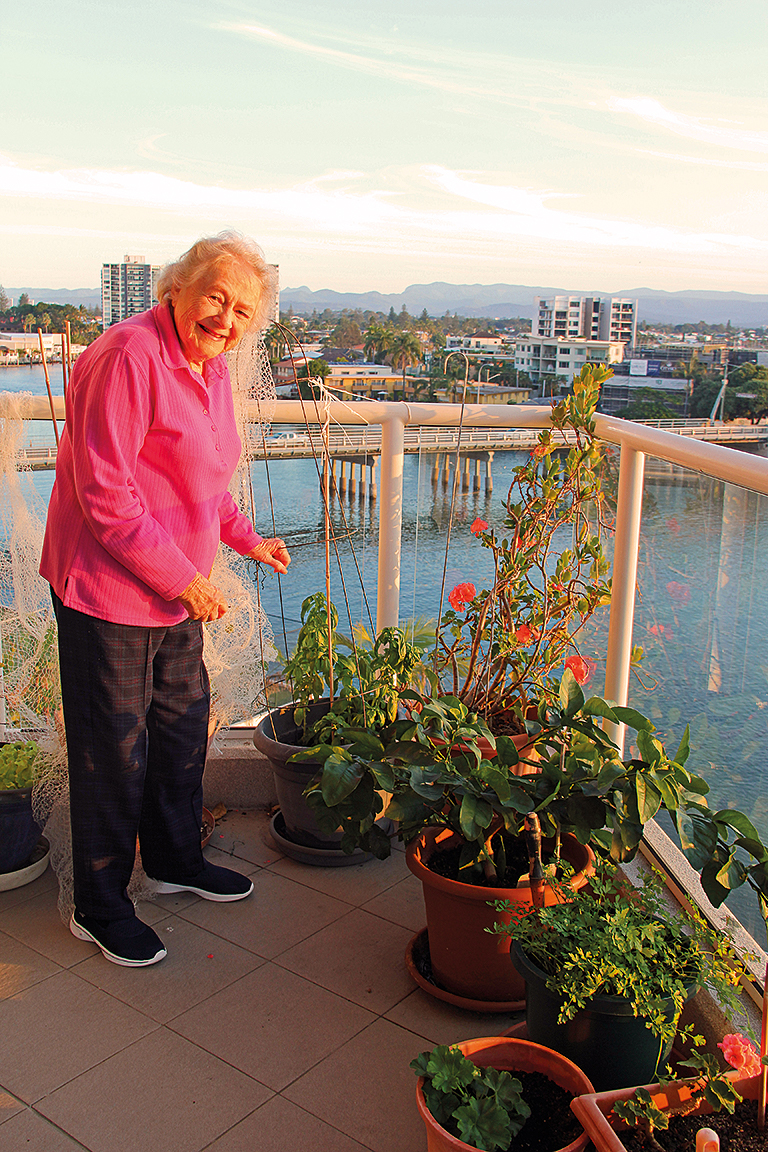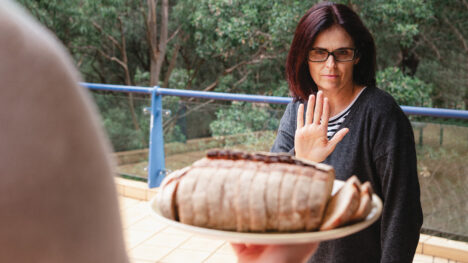
A year after I moved to Surfers Paradise I stepped out onto the balcony of our high-rise apartment and surveyed the desolation of my attempt at a garden. Tiles scattered with dried-out bird poop and potting mix. Herbs either dead or wilting. A drooping pink petunia losing its petals. In fact the only plant thriving was a nameless weed with feathery fronds sprouting near the handrail.
I thought about the tropical garden I’d left behind in Airlie Beach. I missed the fragrant frangipanis, the vivid red pitcher plants, the bananas and pawpaws growing by the pool deck. I missed the hours spent outside pottering around in my wide-brimmed hat and soil-stained gardening gloves.
I knew when I’d moved that my 35 square metres of balcony space wouldn’t be able to reproduce what a quarter acre of rain-soaked soil in the tropics could. But even so, my efforts were beyond abysmal.
In a fit of pique I threw it all away. I hastened the death of the struggling plants by dumping them in the apartment’s industrial bin. I swept the decks and scrubbed the tiles and cleaned the glass and in the end I was left with uninterrupted views of the Nerang River and a living space that, to be honest, was a little more depressing.
As an Australian I was far from unique in having made the transition from a detached house to apartment living. According to the Australian Bureau of Statistics 10 per cent of Australians were residing in an apartment on the 2016 census night and over the past 25 years the number of apartments in Australia has increased by nearly 80 per cent to more than 1.2 million dwellings, which equates to one occupied apartment per five occupied houses. And this trend is only accelerating, according to Associate Professor Hazel Easthope of the University of NSW’s City Futures Research Centre.

Sardaka—Wikimedia Commons
“Our population is growing rapidly and it’s growing in the cities,” she told me. “We are increasingly living in apartments but whether we are choosing to or whether it’s a trade-off between affordability, amenities and location is another question.”
To those who transition to apartment living, Easthope advocates not abandoning our horticultural interests like I had so readily done.
“There’s a lot of evidence that green infrastructure has substantial environmental benefits, social benefits and economic benefits. If we can find ways to provide more green spaces and natural systems such as green walls, gardens and parks in our apartment developments, this will provide incredible value.”
One company helping to achieve this goal is Sydney-based Junglefy, a green roof and wall business. “People feel happier around nature, so plants in cities provide the opportunity for people to retain that natural connection,” said managing director and co-founder Jock Gammon. “Research shows plants make people healthier and work better.”
One of the projects that Junglefy maintains is the world’s tallest vertical garden, more than 130 metres high and 1200 square metres in size, which hangs off the One Central Park high-rise residential building in Chippendale, Sydney. Designed by French artist and botanist Patrick Blanc, the garden, which holds plants together with multi-layered matting and waters them through a dripper irrigation system, contains more than 35,000 plants from 383 species, including acacias, correa, dianella and grevillea.
“The vertical gardens at One Central Park were a world first, and now, four years on, they are still thriving,” said Gammon. “Living infrastructure on buildings increases biodiversity and reduces the heat load on buildings, meaning they absorb less heat and require less air-conditioning.”

Joan Clark. Image Supplied
This is in stark contrast to my own building, whose concrete façade was recently sprayed with bleach to get rid of its accumulated dust and grimy black stains from traffic pollution. The bleaching ended up killing a potted lemon tree on my neighbour Joan Clark’s balcony.
The first time she invited me to her apartment it was mid-afternoon and her back balcony overlooking the Nerang River and the Gold Coast hinterland was alive with colour. Along the railing, the sun-bathed border was pleasantly crammed with pots and growing boxes full of herbs, flowers and vegetables.
Clark, 90, a retired nursing matron, took delight in my interest in her garden and quickly rustled up a balcony-sourced salad containing mint, chives, tomato and romaine lettuce.
“Moving into the apartment was very frustrating at first,” Clark told me, commiserating over my own gardening woes. “Before I came here, I had a very big garden and I used to grow all my own herbs and vegetables.”
I asked her what the secret to her balcony garden was. “When I fill a pot with potting mix, I add some blood and bone and mix it in well so it doesn’t burn the plants,” she said. “I make the soil really damp and then once I’ve planted the seedlings I cover them with newspaper to protect them from the hot sun for a day or two.”
Former ABC TV and SBS news anchor Indira Naidoo knows what it is like to regularly eat fresh produce grown from her own balcony. The best-selling author of The Edible Balcony and The Edible City harvests everything from tomatoes, strawberries, herbs, lettuce, beetroot, broccoli, eggplants, potatoes, lemons and passionfruit grown on her 20 square metre balcony on the 13th floor of an apartment building in Sydney’s Potts Point.
“Growing food in small spaces is an international trend that is just going to continue as people become more aware of climate change and global food issues,” she told me when I spoke to her following an “Edible City” food conference in Sweden where she was a headline speaker.
Naidoo has seen a big shift in people’s attitudes to balcony gardening since she started her own balcony garden a decade ago.
“When I started doing this, everyone said, ‘Why would you do that when you can just go to the supermarket and buy food?’”
Now Naidoo travels around Australia conducting balcony-gardening workshops and advising body corporates and city councils on how to develop apartment green-growing programs.
“Sure, you’re not going to be able to grow everything you eat from a balcony,” she said. “But you can certainly grow all your own herbs, lettuces and spinach, and then, as you get more proficient and comfortable, you can add other vegetables as well.”
Naidoo believes that with little effort, we can all reduce our carbon footprint. “Even if you only ever grew your own lettuces, it would make a huge difference,” she says.
With all the perceived benefits of high-rise gardening, one would think that a well-maintained balcony garden would only draw praise from your neighbours. Unfortunately the reality is often not so simple.
“When you’re living in an apartment, you’re in very close quarters, so you have to be mindful of what effects it has on the neighbours,” Naidoo says. “Occasionally dead leaves fall over the balcony and there are people who don’t want any leaves anywhere—they don’t think it’s beautiful organic matter, they just think it’s rubbish.”
Tyson D’Sylva, ACE body corporate manager in Adelaide, says that while your balcony is a private space, you should check your policy when you buy into a building because there may be some restrictions. The main issue D’Sylva sees between residents is overwatering of pot plants. “Overwatering causes a slip hazard to people and water stains down the building,” he said. “You’ve also got issues where people don’t waterproof their balcony adequately, and it causes the tiles to lift and a deterioration of the balcony’s foundations, which can lead to internal concrete cancer.”
Another bone of contention is unkempt gardens. “If residents want to green the outside, then they need to maintain it,” says D’Sylva. “You don’t just want to have dead twigs outside in a broken terracotta pot. Plants that are not maintained can discourage people from buying into that building.”
The caretaker of my own building, Gary Tresize, has been dealing with issues between residents over the past 23 years. “Problems come up when people don’t do the right thing and place water catchment containers under their pots,” he told me. “Plants can also attract insects and birds, which not everyone appreciates. Lazy pruning is another issue. You’d be amazed by how many people just throw their cuttings off the edge of the balcony.”
Naidoo’s advice is to be considerate of your neighbours and be ready to share your own produce. “I once had an incident where I was pulling some carrots out of a pot and the dried out carrot tops fell onto my neighbour’s balcony,” she said. “He left me a note saying, ‘Stop throwing rubbish onto my balcony.’ So I made him a carrot cake, using carrots from my own garden. And when my second book on balcony gardening was launched I saw him at the bookshop, buying a copy of the book!”
Naidoo has inspired at least seven other residents in her 20-storey building to create an edible balcony. “You don’t have to be an experienced gardener, because it’s just a few pots,” she said. “But it’s such a joyful thing to do. I can’t wait to see a new bud or a new seedling sprout. And then there’s the taste. It tastes better than anything you can buy at the supermarkets. I love it when I have friends and family for dinner and I go, ‘Let me just go out onto the balcony and pick some tomatoes and lettuce for the salad.’”
I won’t pretend that my own balcony garden is flourishing just yet, but inspired by talking with Naidoo, I’ve been down to Bunnings and purchased some potting mix, planters and catchment containers.
I intend to start off slow—chives, mint and lettuce. When I told Clark my plans she was pleased.
“I’d love to help you get started,” she said, smiling at me. “Gardens are like good friends. They’ll always give you a second chance.”
This article first appeared in The Australian. Used with permission. Photos supplied by author.









